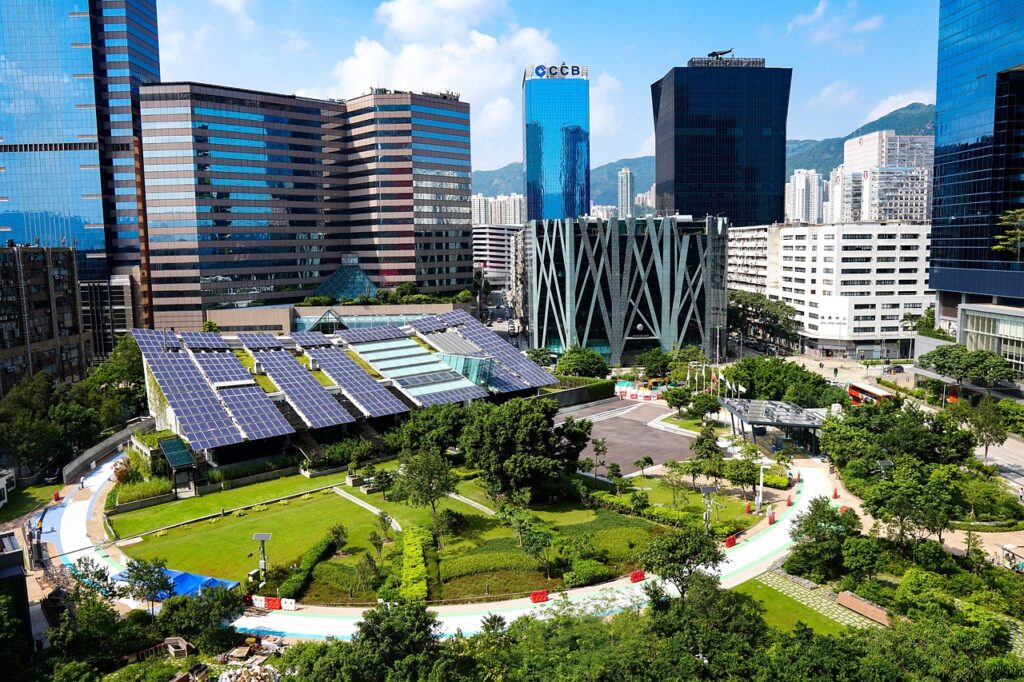Sustainable Tourism Marketing: How Brands Can Align with Consumer Expectations

Sustainability isn’t just a buzzword; it’s quickly becoming a core expectation of today’s travelers. According to Booking.com’s 2022 Sustainable Travel Report, 81% of global travelers consider sustainable travel important, and 70% are more likely to book sustainable accommodation – even if they weren’t specifically searching for one. For hospitality brands, this marks more than a passing trend; it signals a fundamental shift in traveler values and booking behavior.
But here’s the catch: while sustainability is more important than ever, marketing it effectively is anything but simple. Brands scramble to stand out in a crowded market, where sustainability is often reduced to vague buzzwords or PR-friendly packaging.
Meanwhile, travelers – bombarded with green claims and certifications – struggle to decode what’s genuine and authentic. They want eco-friendly choices, but not at the expense of comfort, luxury, or convenience.
In this article, we’ll unpack the real challenges brands face when marketing sustainable tourism — a space full of friction, ambiguity, and fierce competition. More importantly, we’ll explore proven strategies for building trust, engaging guests, and differentiating your brand, so you can turn sustainability into a powerful business asset.
The Reality Check: Challenges in Sustainable Tourism Marketing
Let’s unpack the fuller picture of why marketing sustainable tourism is such a tricky terrain, and how even well-meaning brands struggle to communicate their impact clearly.
The Complexity of Sustainability Messaging

Brands often get caught in a tough spot, particularly when it comes to crafting sustainability messaging that is either too explicit or hushed.
Research from the Journal of Destination Marketing & Management found that many tourists reject overt sustainability claims, which may not resonate with them. Instead, they prefer to see sustainability being integrated into the overall travel experience, wherein they can experience and participate, rather than marketed as a standalone feature.
Similarly, brands face the risk of greenwashing — an act of falsely claiming sustainability to attract eco-conscious consumers. A 2023 Nuremberg Institute for Market Decisions (NIM) study revealed that 70% of consumers would avoid companies accused of greenwashing.
Yet, there’s also another emerging issue: greenhushing. Some businesses, fearful of greenwashing accusations, choose to downplay or omit their sustainability efforts altogether. These companies miss out on the opportunity to connect with consumers who want to support environmentally responsible businesses.
The complexities don’t stop there. For example, sustainability ≠ only carbon emissions. Brands may struggle to craft a digestible message that showcases their environmental, social, and economic impacts. The challenge is finding balance — communicating the authenticity of their sustainable efforts without overwhelming or alienating consumers.
When Intentions Don’t Match Actions: The Sustainability-Behaviour Gap

What poses a real marketing challenge for brands is a classic value-action gap: travelers say they care about sustainability, but their purchasing behavior often tells a different story.
On paper, travelers increasingly express concern for the environment and show interest in making more sustainable travel choices. But in practice? Convenience, comfort, and cost still rule.
Take this insight from the World Travel & Tourism Council (WTTC): while a majority of travelers say sustainability is important to them, over 50% still prioritise cost, and around 30% prioritise quality when booking. Sustainability only emerges as the primary decision factor for 7-11% of travelers.
It gets more complicated when money enters the equation. According to Trip.com Group’s Sustainable Travel Consumer Report 2024, 42.5% of travelers are open to paying more for sustainable options – but the willingness sharply drops when actual figures are involved:
- Only 4.7% would pay 10–20% more,
- And just 1.7% would pay over 20%.
Travelers like the idea of sustainability until it asks too much of them. Bridging this sustainability-behaviour gap requires not just smarter storytelling, but reframing sustainability as a value-add to travelers, not a compromise.
Cultural Gaps: One Message Doesn’t Fit All
Many brands make the mistake of transplanting a ‘one-size-fits-all’ narrative of sustainability — often shaped by Western ideals — into different locales, as if sustainability has a universal meaning. They ignore local cultures and contexts, forgetting that what resonates with eco-conscious travelers in Paris or Montreal might sound irrelevant or even elitist in Bangkok or Seoul.
Research underscores this cultural mismatch. A comparative study revealed that Asian tourists tend to prioritize price and government-influenced norms, while non-Asian tourists are more driven by individual values, quality, and design. The implication? A green tourism pitch that works in Europe might fall flat in Asia if it ignores deeper social or cultural cues.
Marketing strategies must evolve accordingly:
- In Asian markets, emotional appeals rooted in collective responsibility, tradition, or national pride are more effective.
- For Western audiences, emphasizing individual action and ethical choices tends to work better.
To cut through the noise, brands must invest in localisation, contextual research, and culturally fluent messaging. Yes, it takes more time and budget — but the payoff is better market alignment, deeper resonance with diverse traveler segments, and credibility that travels well.
Everyone’s “Eco” — Now What?
Sustainability has become the default marketing language in tourism. From airlines to hostels, nearly every brand claims to be eco-conscious, often using the same buzzwords.
As a result, travelers are increasingly tuning out. This ‘green fatigue’ makes it harder than ever for genuinely sustainable businesses to stand out. On crowded booking platforms or social feeds, even the most impactful efforts can get lost in the noise.
Without clear differentiation, sustainability messaging risks blending into a blur of vague promises. Marketers face the challenge of proving authenticity without overexplaining or sounding performative.
What cuts through? Stories rooted in the local community, visible actions on-site, and showing guests the real impact of their choices — but getting that across in a saturated landscape is a constant uphill climb.
Optional Sustainability: Ticking Clocks, Shrinking Budgets

Despite mounting climate disruptions — from wildfires to floods — many tourism brands still treat sustainability as optional.
According to Deloitte’s European Hospitality Industry Conference survey:
- Only 50% of industry leaders view climate change disruptions as a high-risk factor in the next three years.
- Even fewer — just 39% — recognise the threat of falling behind on evolving sustainability standards or facing non-compliance risks within that same timeframe.
This lag in urgency reflects a deeper issue: sustainability is still widely viewed as a PR asset, not a core business driver.
Without executive buy-in or long-term vision, sustainability remains underfunded, under-promoted, and disconnected from strategic goals (like customer loyalty or operational resilience). When it’s not tied to measurable outcomes or treated as a value-generating function, it slips into the background — until the next extreme weather event forces it back into view.
Strategies for Sustainable Tourism Marketing That Convert
Let’s face it — talking about sustainability isn’t enough. If your messaging doesn’t move people to book, it’s not doing its job.
This section focuses on what works: grounded strategies that connect with real traveler behavior and cut through the noise, turning eco-values into impactful outcomes.
Beyond Buzzwords: Building Brand Stories That Stick

Forget dry stats and checkbox claims – sustainability marketing works best when it resonates. One of the best ways to capture consumers’ attention, wow them, and inspire action is through brand storytelling — delivered through the digital platforms where travelers already spend their time.
Successful brands are shifting towards emotionally rich, content-driven narratives that highlight real impact and build trust. Here are some strategies:
- Social media and influencer marketing: Collaborating with trusted influencers who can share personal, authentic stories helps brands reach new audiences.
- Partnerships with environmental organisations: Working with global and grassroots groups allows brands to get involved in real campaigns, amplify their impact, and demonstrate tangible commitment to local sustainability efforts.
- Interactive and user-generated content: Multimedia formats like videos, infographics, and traveler-generated stories invite participation and help messages resonate with eco-conscious audiences.
Take Intrepid Travel, for example. The adventure travel brand shifted from a performance-led marketing strategy (where 90% of its budget once went) to a brand-led marketing approach. By showcasing authentic, user-generated content from real travelers across social media, videos, blogs, and influencer collaborations, they brought their tours to life and spotlighted their commitment to local cultures and sustainability in a human, relatable way.
They didn’t just talk about sustainability — they showed it. The result? A 68% jump in bookings and a 41% increase in online revenue.
What makes their messaging work? Emotion. Local detail. Clarity. Whether it’s showcasing partnerships with conservation groups or celebrating the artisans behind a guest’s handwoven blanket, brands that localise their sustainability message — culturally and contextually — tend to convert better.
But it’s a fine line: educating without sounding preachy, and inspiring without overselling. The best messages meet travelers where they are — and show them what’s possible.
Engaging Consumers Through Smart and Sustainable Experiences

Consider that today’s travelers — especially Gen Z and Millennials — aren’t just looking for sustainability; they want it to feel good, do good, and fit naturally into their experience. While they care deeply about climate issues, these generations also crave comfort, authenticity, and Instagrammable moments.
The brands that win aren’t those that preach sustainability, but the ones that design it into the experience.
Guest Involvement as a Marketing Strategy
Hospitality brands are turning their sustainability into interactive guest experiences — and this is working. Be it coral planting, conservation campaigns, or something as simple as refillable toiletries, these initiatives invite travelers to be part of the solution, not just passive observers.
For instance, Parkroyal on Beach Road in Singapore rewards guests with a S$10 dining credit for opting out of daily housekeeping, with rooms cleaned on alternate days. Those who actively support the hotel’s environmental initiatives get a GoGreen Award.
Meanwhile, island resorts are offering immersive options, such as eco-friendly amenities and coral restoration programs where guests can help outplant specific reef species.
These seemingly small actions do more than reduce environmental impact. They foster a sense of personalisation and purpose, driving brand loyalty.
In your next sustainability campaign, enable guest involvement and highlight these immersive opportunities. You’ll stand out by turning sustainability marketing from corporate claims into opportunities for personal, memorable guest experiences.
Smart Technology That Enhances Guest Experience

Technology is another powerful lever, and can be strategically marketed as a sustainability enabler. Digital guest apps, contactless check-ins, smart energy management, and dynamic in-room controls all work behind the scenes to reduce waste and optimize guest satisfaction.
Take Hilton’s Connected Room: guests can control lighting, entertainment, and temperature via their phones. When rooms are unoccupied — a whopping 70% of the time — systems can power down automatically, cutting energy consumption significantly. Other hotels use tablet systems to replace in-room paper materials, from menus to directories, saving both cost and trees.
Beyond automation, data-driven personalisation is the next frontier. With AI and behavioral insights, hotels can tailor sustainability nudges based on the traveler profile. For example, an eco-conscious backpacker may welcome daily tips on local conservation efforts, while a family on vacation might prefer low-effort options like towel-on-request systems or waste sorting guidance.
Ultimately, integrating sustainability into both experience and infrastructure makes it easier for travelers to opt in — and more likely they’ll return, advocate, and remember your brand for all the right reasons.
Building Trust and Visibility in the Market

To stand out in a crowded market, sustainability marketing should take a multi-pronged approach.
While it’s important to tell stories and engage consumers, travel and hospitality brands can elevate their reach through a strategic, larger-scale approach: Building widespread trust and visibility in the market, through certifications, strategic partnerships, and influential collaborations.
Green Certifications and What They Unlock
Green certifications like GSTC (Global Sustainable Tourism Council), Green Key, EarthCheck, and B Corp serve as key indicators of a brand’s sustainability efforts. In a time when travelers are bombarded with vague eco-friendly claims, certifications act as third-party validation, offering travelers proof.
Unlike marketing claims, a recognised certification requires ongoing audits and clear standards. It makes efforts measurable and transparent. This signals not just intention, but long-term commitment to sustainable practices.
Still, consumer skepticism remains. A study published in Sustainability found that while many consumers recognise labels like Green Key and LEED, they often lack a clear understanding of what these certifications mean. This ambiguity can reduce the effectiveness of certifications as marketing tools.
That’s why clear, accessible communication about your certifications is crucial. Don’t just display the badge — explain the impact behind it.
Further, certification opens up more than just positive brand recognition — it can unlock access to broader market visibility. For example, the GSTC Market Access Program partners with online travel agencies (OTAs) to promote certified properties, increasing their visibility among eco-conscious travelers. By becoming GSTC certified, hotels can gain credibility and boost their profile, which enhances booking opportunities and consumer trust.
Strategic Industry Partnerships

Beyond certifications, strategic partnerships with trusted industry players can help brands reach eco-conscious travelers more effectively.
In fact, hotels and travel providers are increasingly teaming up with NGOs, eco-conscious influencers, and sustainability-driven OTAs to offer bundled, verified experiences: curated packages that combine accommodation, activities, and local culture into one easy-to-book, genuinely sustainable itinerary.
These bundles save travelers the hassle of piecing together their own eco-travel plans — and they come with built-in trust. Think:
- A certified green hotel + guided eco-tour with a local NGO
- Farm-to-table dining curated by boutique hotels and certified organic farms
- Wellness + Conservation retreats offered by resorts partnering with reforestation or marine conservation groups
- Cultural trails organised by tourism boards and artisan cooperatives
- Luxury stays paired with impact-driven experiences like coral planting or indigenous-led workshops
What makes these offerings stand out is verification: third-party validation that ensures what’s marketed as ‘sustainable’ truly meets the mark.
Did you know? According to Trip.com Group’s 2022 Sustainable Travel Consumer Report, 93% of respondents said they would consider booking via OTAs that provide clearly labeled sustainable choices. While cost and quality still dominate decision-making, sustainability remains a meaningful factor for many travelers — especially when it’s made easy to act on.
Conclusion: The Future of Sustainable Tourism Marketing
The bar for sustainability in tourism is rising, and brands must step up to meet the challenge. As eco-conscious travelers become more discerning, the need for sustainability to be visible, personal, credible, and strategic has never been more urgent.
The future of tourism marketing is co-created, tech-enabled, and climate-ready. Brands that go beyond bold claims — backing them up with authentic actions and trusted partnerships — will lead the next era of tourism. Today’s travelers are watching. They’re ready to engage with brands that walk the talk.
Sustainability isn’t just an ethical responsibility; it’s a profitable, future-proof business strategy. Brands that treat sustainability as a long-term strategy — not a trend or checkbox — will win consumer trust, loyalty, and market share.
The path forward is clear: embrace sustainability as the foundation of your brand’s future. Help shape a tourism industry that’s better for people, planet, and profit.


